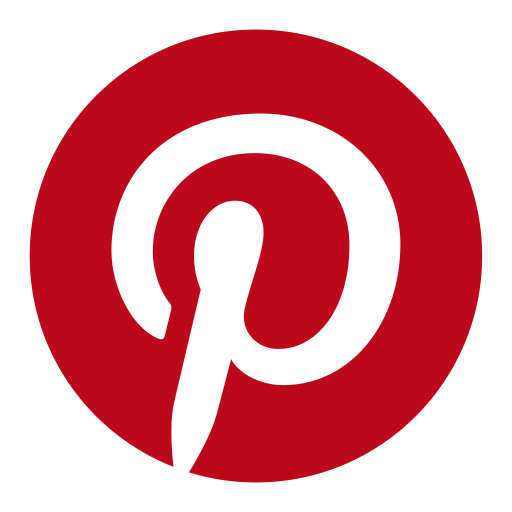| aukciósház |
Widder Auctions |
| aukció dátuma |
2025.06.05. 11:00 |
| aukció címe |
Fair Partner ✔
Small treasures from 11 am – Discoveries from 4 pm |
| aukció kiállítás ideje |
Opening hours | Tue - Fri: 11 a.m. - 6 p.m., Sat: 10 a.m. - 3 p.m. |
| aukció elérhetőségek |
+43-1-512 45 69, +43-676-555 66 10 | office@kunsthandelwidder.com | https://widderauktionen.com/en |
| aukció linkje |
https://axioart.com/aukcio/2025-06-05/widder-auctions-spring-auction-2025 |
169. tétel
LUDVIK KUBA* ( Podiebrad 1863 - 1956 Prag ): Bundle of 13 works by rare Hagenbund artists
LUDVIK KUBA* (Podiebrad 1863 - 1956 Prag)
Bundle of 13 works by rare Hagenbund artists
1| Ludvik Kuba* (Podiebrad 1863 - 1956 Prague)
Reading woman, around 1900
pencil/paper 32,2 x 21,1 cm
signed L. Kuba
2| Rudolf Grossmann (Freiburg 1882 - 1941 Freiburg)
Biblical scene
lithograph/paper 33,6 x 45,5 cm
3| Ferdinand Staeger* (Trebitsch 1880 - 1976 Kraiburg near Inn)
Entry
etching/paper 12,5 x 7,5 cm
signed F. Staeger, inscribed Probedruck
4| Ferdinand Staeger* (Trebitsch 1880 - 1976 Kraiburg near Inn)
Lover's dream
etching/paper 12,5 x 7,5 cm
signed F. Staeger, inscribed Probedruck
5| Ferdinand Staeger* (Trebitsch 1880 - 1976 Kraiburg near Inn)
Musicians in courtyard
etching/paper 12,5 x 7,5 cm
signed F. Staeger, inscribed Probedruck
6| Ferdinand Staeger* (Trebitsch 1880 - 1976 Kraiburg am Inn)
Musician's dream
etching/paper 12,5 x 7,5 cm
signed F. Staeger, inscribed Probedruck
7| Hans Wilt (Vienna 1867 - 1917 Vienna)
Study of a landscape
lithograph/paper 19,5 x 24 cm
signed and dated in plate H. Wilt 1900
inscribed in plate Landschaftsstudie
8| Loepold Burger (Vienna 1861 - 1903 Bressanone)
Don Quichotte & Sancho Pansa
pencil and ink/paper 17 x 9,5 cm
monogrammed L. B
9| Ferdinand Strabsky* (Viehofen near St. Pölten 1904 - 1981 Vienna)
Tullnerfeld, ca. 1960
etching/paper 26,9 x 38,2 cm
verso estate stamp F. Stransky
10| Adolf Luntz (Vienna 1875 - 1924 Karlsruhe)
Winter
etching/paper 12,4 x 22,5 cm
signed in plate Ad. Luntz
11| Adolf Luntz (Vienna 1875 - 1924 Karlsruhe)
Frankfurt
etching/paper 13 x 20,9 cm
signed in plate Ad. Luntz, dated 1923
inscribed Probedruck 19.27
12| Emmerich Schaffran* (Vienna 1883 - 1962 Vienna)
Steintor in Krems
lithograph/paper 12 x 17,5 cm
inscribed in plate Orig. Steinzeichn. v. Em. Schaffran - Wien.
13| Emmerich Schaffran* (Vienna 1883 - 1962 Vienna)
Furth
lithograph/paper 17,5 x 12,1 cm
inscribed in plate Orig. Steinzeichn. v. Em. Schaffran - Wien.
SCHÄTZPREIS / ESTIMATE °€ 200 - 400
STARTPREIS / STARTING PRICE °€ 200
Ludvik Kuba was an Austrian-Czechoslovakian painter, graphic artist, writer, and folklorist. As a painter, he created impressionistic landscapes, portraits, and still lifes, as a folklorist, he excelled at recording traditional costumes and collecting folk songs. From 1879 to 1885, Kuba attended teacher training college and then worked as an assistant teacher. In 1888, he enrolled at Karel Liebscher's private painting school in Prague. From 1891 to 1893, he studied painting at the Prague Academy under Maximilián Pirner and, in 1895, at the Académie Julian in Paris. In 1896, he briefly studied at Anton Azbe's private painting school in Munich. From 1890, he travelled to various Slavic countries to learn about customs, traditions, songs, and dances, which he documented in writing and painting. Kuba lived in Vienna from 1904 to 1911, then returned to Prague. In 1905, he was represented for the first time in the Hagenbund, and in 1906 he became a member in 1913. He also served on the board. In 1922, he was a guest at a Hagenbund exhibition in Košice. Kuba was also a member of the Prague artists' association Mánes. Works by Kuba are in the following collections: Belvedere, Vienna, Albertina, Vienna, Modern Gallery Prague, Ethnographic Museum Prague, Sorbian Museum Bautzen. Rudolf Grossmann was a German artist. He grew up as the grandson of the Baden court painter Wilhelm Dürr and the son of a portrait painter. He studied medicine and philosophy in Munich from 1902 to 1904 and then lived in Paris for five years as a student of Lucien Simon. Under the influence of Paul Cézanne, he devoted himself to landscape painting and frequented the circle of German artists in the Café du Dôme. Jules Pascin became his closest confidant and teacher, and together they travelled to Belgium and Holland. Grossmann also travelled to France, Vienna, Budapest and Stockholm. He visited Italy together with Hans Purrmann. From 1910 he lived mainly in Berlin, worked as a graphic artist and, as an illustrator, created, among other things, portraits for Simplicissimus. In 1928, he became a professor at the Berlin Art Academy and was a member of the Berlin Secession and the German Artists' Association. In his portraits and street scenes he documented Berlin life until 1933. The National Socialists deposed him as a professor. In 1937, three works by Grossmann were shown in the Nazi propaganda exhibition “Degenerate Art” and 206 of his works were confiscated. Ferdinand Staeger was a painter, graphic artist, and illustrator. Initially, he worked primarily as an etcher and engraver, committed to Art Nouveau. From 1918 onward, he increasingly turned to Symbolist painting and Upper Bavarian landscapes. From 1894 to 1896, Staeger attended the textile school in Brno, from 1896 to 1902, he studied painting at the Prague School of Applied Arts. From 1902 to 1903, he lived in Vienna, and from 1904 to 1908 in Prague, then he moved to Munich. There, he worked for various magazines ("Jugend") and publishers (e.g., Wiechmann, Bruckmann, Amalthea, Gerlach). He became a member of the Munich Artists' Association, he was first represented in the Hagenbund in 1905. From 1910 to 1913, he was a member of the Hagenbund. Staeger was deployed as a war painter in both World Wars. During World War II, it was bombed out, resulting in the loss of numerous works. From 1943 to 1957, Staeger lived in Rettenberg, after which he moved to Waldkraiburg. Collectives: 1924 Madrid (graphics), 1934 Prague, 1965 Stuttgart (graphics), 1970 Austrian Military History Museum Vienna. Works by Ferdinand Stager are part of the following collections: Albertina, Vienna, Museums of the City of Vienna, Military History Museum Vienna, Neue Pinakothek Munich, State Graphic Collection Munich, Städtische Galerie Munich/Lenbachhaus. Hans Wilt was an Austrian painter. Wilt was taught by Johann Kautsky for five years and then studied from 1886 to 1891 at the Vienna Academy of Fine Arts under Eduard Peithner von Lichtenfels. Between 1893 and 1894 he stayed in Rome on a scholarship from the Vienna Academy. From 1896, he was a member of the Vienna Künstlerhaus. In 1900, he received the bronze medal at the World Exhibition in Paris. In the same year, he was a founding member of the Hagenbund, to which he belonged until 1905. In 1917, a memorial exhibition in honour of Hans Wilt took place in the Vienna Künstlerhaus. The painter Leopold Burger studied at the Academy of Fine Arts, initially painted pictures from Viennese street life (arrest, milk gossip, Reichsrat election and others), created a wall frieze and ceiling paintings for the Café Habsburg and received second prize for his designs for the artistic design of the German Folk Theater (1888). Burger then turned to decorative painting (employee of Josef Fux on the main curtain of the [new] Burgtheater). In 1891, Burger became a member of the Künstlerhaus, and from 1900 to 1903 he was a member of the Hagenbund. Ferdinand Stransky was an Austrian painter of the 20th century. Ferdinand Stransky attended the restoration school at the Vienna Academy from 1919 to 1923 and studied with Serafin Maurer, who, however, didn't think much of his student's enthusiasm for Oskar Kokoschka. From then on, Stransky trained himself as a painter. After his studies, he worked as a restorer, but also sold his own work. On the recommendation of the sculptor Georg Ehrlich, he was accepted into the Hagenbund in 1937. After the war, he became a member of the Secession and was one of the founders of the artist group “Der Kreis”. He earned his living as a restorer for the St. Lucas Gallery, but also found increasing recognition as an independent painter. Supported by the art historians Otto Benesch, Fritz Novotny and Hans Aurenhammer, he took part in the biennials in São Paulo and Tokyo. Adolf Luntz, son of the architect Viktor Luntz, was an Austrian painter and graphic artist. As a painter, Luntz primarily created landscapes and depictions of people, as a graphic artist, he mostly produced etchings and, more rarely, lithographs. From 1892 to 1896, he studied painting at the Vienna Academy under Fritz L'Allemand, Eduard Peithner Ritter von Lichtenfels, and Wiliam Unger (etching). In 1898, he began studying at the Karlsruhe Art Academy under Gustav Schönleber, from 1905, Karlsruhe was his permanent residence. In 1899, he designed collector's cards and scrapbooks for the Cologne chocolate factory Ludwig Stollwerck. Study trips, usually with Schönleber, took Luntz to Northern Italy, Holland, Belgium, and various parts of Germany. In 1902, he was a guest member of the Hagenbund, and from 1904 to 1908, he was a member. He was also a member of the Karlsruhe Artists' Association. Works by Adolf Luntz are included in the following collections: Albertina, Vienna, Museum of the City of Vienna, Kunsthalle Karlsruhe, and Gelsenkirchen Municipal Museum. Emmerich Schaffran was an Austrian painter, graphic artist, illustrator, fresco artist, and art writer. As a painter, Schaffran primarily created landscapes, sometimes in a fairytale-like and stylized style. He pursued a military career until 1903, after which he studied art history and archaeology at the University of Vienna. He studied painting privately with Anton Hlavacek in Vienna and Hans Lietzmann in Munich. Schaffran was also active as a writer ("The Art of the Lombards," "The Architectural Styles of Europe," "Early Christian Mosaics", and he also contributed articles to art history journals). Schaffran created various graphic series, the most famous of these is "My Vienna," ten colour etchings, Vienna 1920. Study trips took him to Italy, Germany, and Switzerland. He was a member of the Viennese artists' associations "Dürerbund" and "Segantini." He was first represented in the Hagenbund in 1909, and was a member of the Hagenbund from 1927 to 1938. From 1923 to 1942, he taught art history at the Vienna Urania, and from 1941 to 1948, he was an art expert at the Vienna Dorotheum. He also worked for the Austrian Federal Monuments Office. Schaffran also created mosaics and sgraffito: Otto-Haus auf der Rax, Hotel Knappenhof Semmering, Landespflegeanstalt Wien-Steinhof, etc. Works by Emmerich Schaffran are in the following collections: Albertina, Vienna, Museum of the City of Vienna, Museum of Lower Austria.
PLEASE NOTE:
The purchase price consists of the highest bid plus the buyer's premium, sales tax and, if applicable, the fee of artists resale rights. In the case of normal taxation (marked ° at the estimate), a premium of 24% is added to the highest bid. The mandatory sales tax is added to the sum of the highest bid and the buyer's premium. This amounts to 13% for paintings, drawings, graphic works and sculptures and 20% for photographs and all other items.
The buyer's premium amounts to 28% in case of differential taxation. The sales tax is included in the differential taxation.



















































































 VÉTELI MEGBÍZÁST ADOK
VÉTELI MEGBÍZÁST ADOK



















